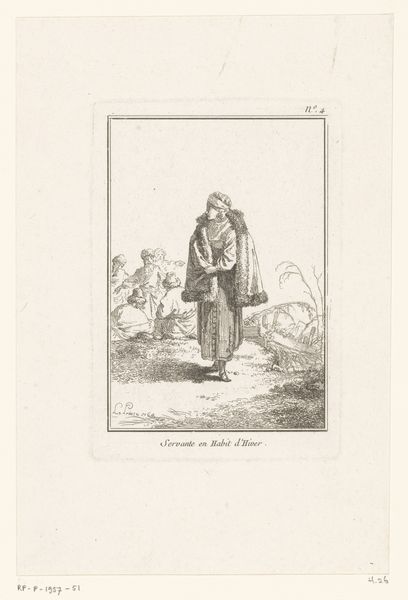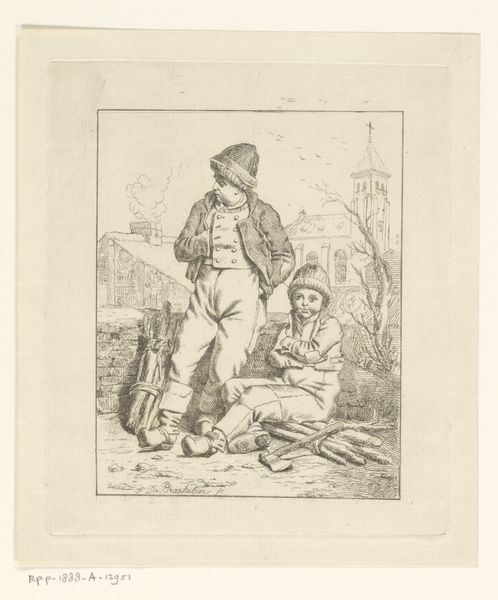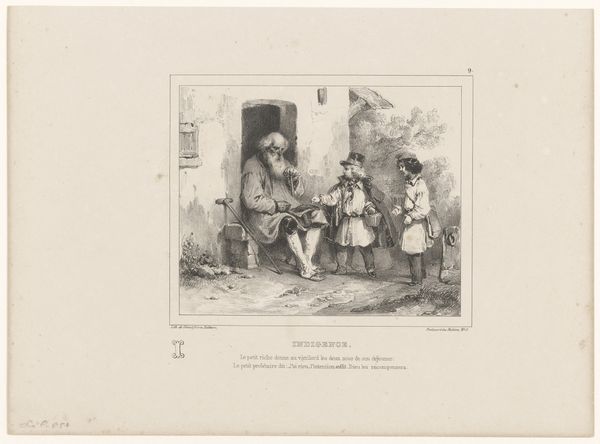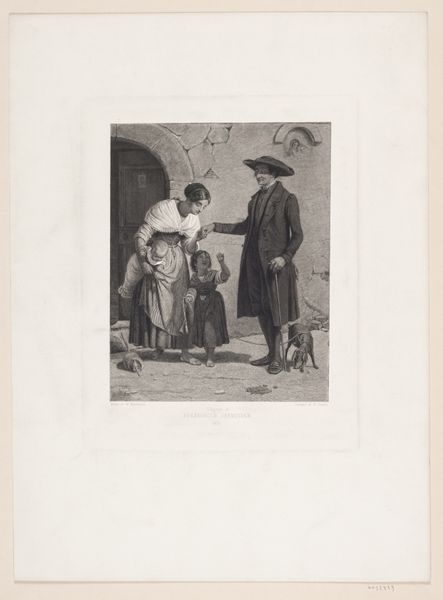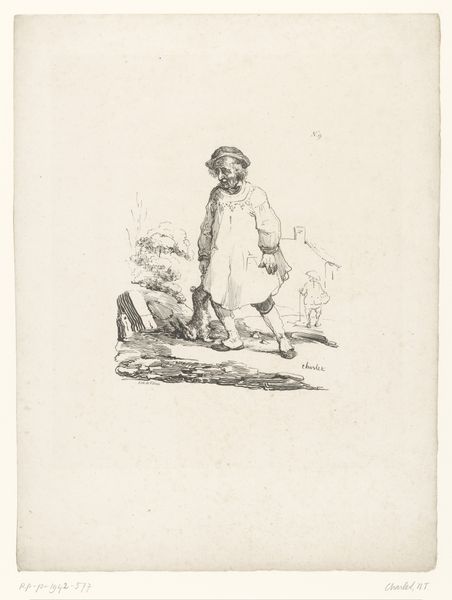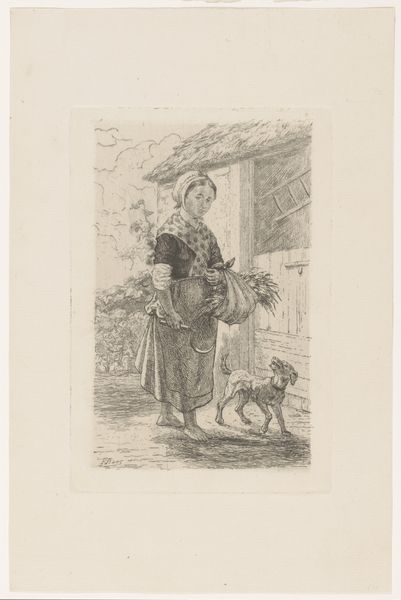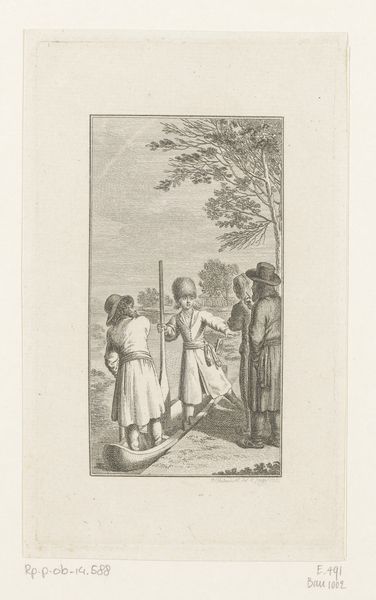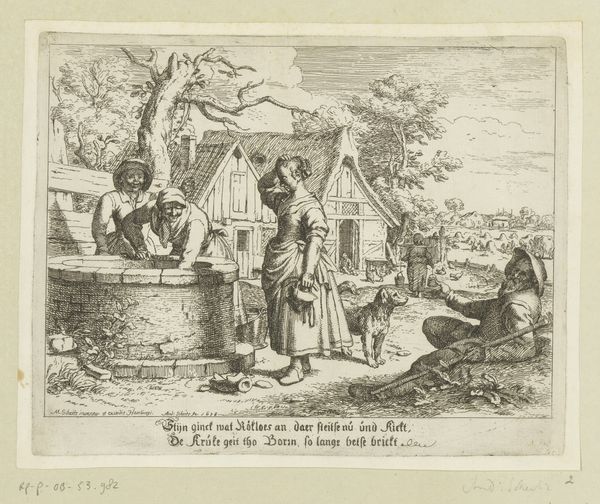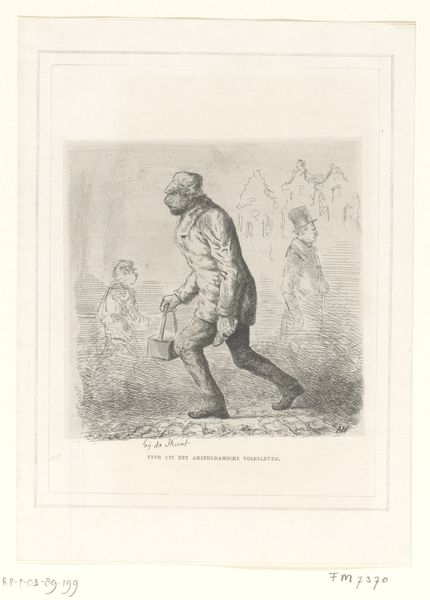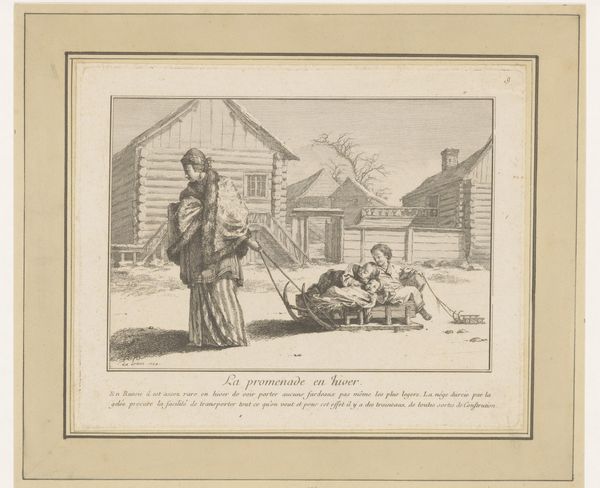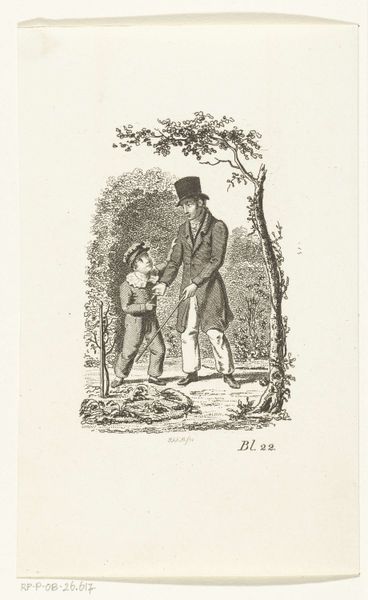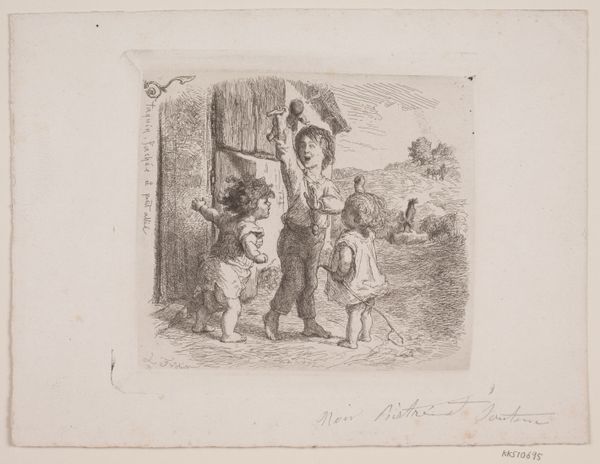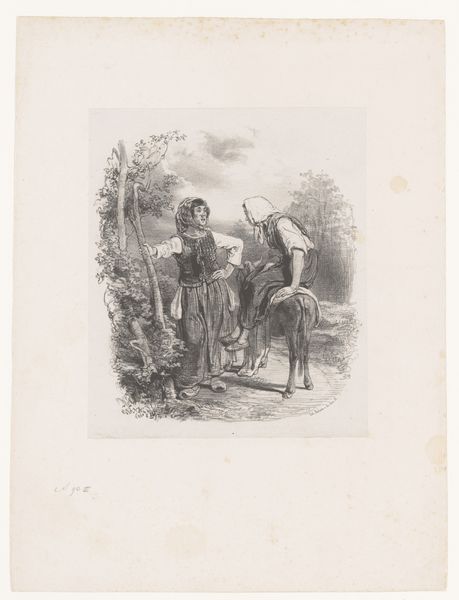
Dimensions: height 223 mm, width 176 mm
Copyright: Rijks Museum: Open Domain
Curator: This print, made in 1765 by Jean-Baptiste Le Prince, is titled "Moeder met twee jonge kinderen," which translates to "Mother with two young children." It resides here at the Rijksmuseum. Editor: It feels so… gentle, like a half-remembered dream. There’s a tenderness in the lines, especially around the faces. The scene is framed so precisely. It is making me ponder my own early childhood. Curator: Precisely, the "gentleness" you note can be situated within the broader context of the rise of Romanticism and its emphasis on emotion and the idealization of domestic life. How does this imagery reflect and potentially construct ideas around motherhood? Consider its portrayal in contrast to reality. Editor: The way she holds one child's hand... it's protective, yes, but there's a slight detachment too, like she is weary. Perhaps this reflects more the reality than we realize, that tension between duty and love. It isn’t some saccharine, picture-perfect ideal, even if that may be the intention. I imagine Leprince wasn’t unaware of the burdens society placed upon women and mothers, even then. Curator: We should examine this notion of "burdens" through a lens informed by feminist theory. How does her attire, especially the headwrap, intersect with concepts of modesty, class, and potentially ethnic identity in 18th-century Europe? What limitations did those place on a mother? This is important to contextualize our discussion. The woman isn’t the blank slate some male artists made her out to be. Editor: Looking closer, the building behind them is quite humble, yet rendered with detail. There's a groundedness to the scene that brings it alive, reminding us that life – even motherhood – occurs in everyday, physical places, never truly in isolation. The stark, elegant, and subtle lines are incredible. I appreciate how the story lives in them. Curator: These material realities absolutely demand we situate our perspective, particularly class dynamics and rural life, to gain any substantial appreciation of this domestic scene. Editor: The discussion certainly made me consider what exists beyond the surface when discussing this work. Curator: Indeed. Thinking about its intersectional social narratives expands its appeal for contemporary audiences.
Comments
No comments
Be the first to comment and join the conversation on the ultimate creative platform.
